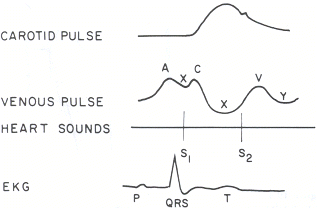 In the summer of 2010, I came across a health report on the national news that was titled “Angiotensin Receptor Blockers Linked to Cancer”. The headline was based on a publication that demonstrated an increased cancer signal associated with the use of ARB therapy. The results appeared in the July 2010 edition of Lancet Oncology. Riding on the tail of ONTARGET hysteria (see Nate’s article), the results of this study abruptly prompted an FDA safety review on the potential link between ARBs and cancer. Given the provocative conclusions of this study, I felt it deserved critical review and acknowledgement within RFN.
In the summer of 2010, I came across a health report on the national news that was titled “Angiotensin Receptor Blockers Linked to Cancer”. The headline was based on a publication that demonstrated an increased cancer signal associated with the use of ARB therapy. The results appeared in the July 2010 edition of Lancet Oncology. Riding on the tail of ONTARGET hysteria (see Nate’s article), the results of this study abruptly prompted an FDA safety review on the potential link between ARBs and cancer. Given the provocative conclusions of this study, I felt it deserved critical review and acknowledgement within RFN.BACKGROUND
Sipahi et al published “Angiotensin-receptor blockade and risk of cancer: meta-analysis of randomized controlled trials” in July 2010. The hypothesis for this study was based on experimental studies showing that the renin-angiotensin system, particularly angiotensin II receptors, play an integral role in the regulation of cell proliferation, angiogenesis, and tumor progression. However, there was a recent study in JCI showing increased longevity in angiotensin II receptor type 1A (AT1A) KO mice and another study in mice showing less tumor growth in AT1A KO mice.
In human studies, the Candesartan in Heart failure Assessment of Reduction in Mortality and Morbidity (CHARM) trial, which assessed ARBs in heart failure, reported an unexpected finding of significantly higher fatal cancers in the candesartan group than with placebo.
OBJECTIVE
The primary aim of the study was to examine the effect of ARBs on the incidence of new cancer diagnoses. Secondarily, the study aimed to determine the affect of ARBs on the occurrence of specific solid-organ cancers and mortality related to cancer.
METHOD
Data was collected using medical search engines.New cancer data were available for 61,590 patients from five trials. Data on common types of solid organ cancers were available for 68,402 patients from five trials, and data on cancer deaths were available for 93, 515 patients from eight trials.
RESULTS
· Patients randomly assigned to receive ARBs had a significantly increased risk of new cancer occurrence compared with patients in control groups (7.2% vs6.0%, risk ratio [RR] 1.08, 95% CI 1.01–1.15; p=0.016)
· When analysis was limited to trials where cancer was a pre-specified endpoint, the RR was 1.11 (95% CI 1.04–1.18, p=0.001)
· Only new lung-cancer occurrence was significantly higher in patients randomly assigned to receive ARBs than in those assigned to receive control (0.9% vs0.7%, RR 1.25, 1.05–1.49; p=0.01)
· No statistically significant difference in cancer deaths was observed (1.8% vs1.6%, RR 1.07, 0.97–1.18; p=0.183)
LIMITATIONS
· META-ANALYSIS, not a prospective trial
· Studies analyzed were not designed or powered to examine cancer incidence or outcomes
· Cancer data was not available in all trials, suggesting possible publication bias
· Individual cancer data and timing of cancers was not available
· The study design precluded adjustment for age, sex, smoking history, etc
· Most trials used were less than 5 years in duration (too short to adequately assess cancer signal)
In an accompanying editorial, Nissen called for an urgent regulatory review of ARBs and described the study findings as “disturbing”. Moreover, Nissen stated that ARBs should be used with greater circumspect by the medical community.
Needless to say, the conclusions of this meta-analysis and the accompanying editorial ignited a myriad of assertive retorts criticizing the study design and conclusions. Experts lashed out against the authors and journal, calling the results “very skewed” and “a bad example of science”. Interestingly, 10 years ago similar cancer risks were postulated to be associated with amlodipine. In a subsequent meta-analysis published in the very same journal, Bangalore et al. identified NO excess risk of cancer or cancer death associated with any single anti-hypertensive agent.
In my opinion, to change practice patterns based on one meta-analysis (that generated data from studies that were never intended to examine cancer occurrences and outcomes) appears immoderate. The nature of the study design, at best, only suggests a possible link between cancer and ARB therapy. I have not changed my prescribing pattern based on this study. What are your thoughts?
Michael Lattanzio DO


























